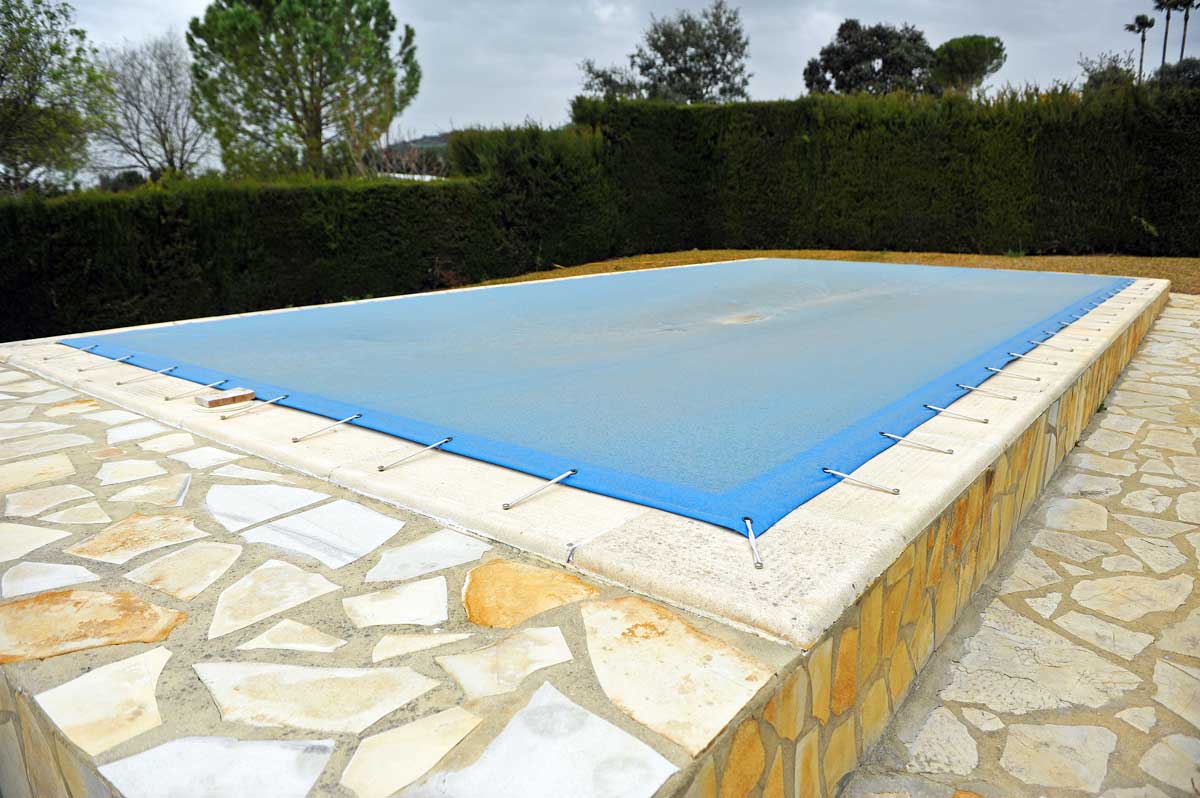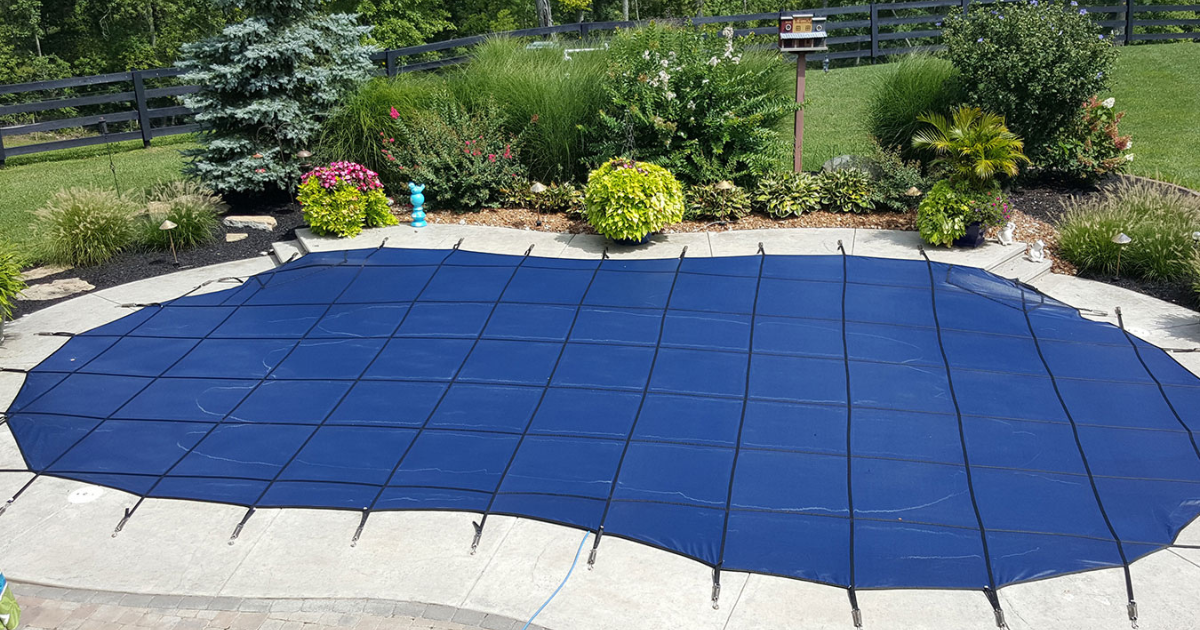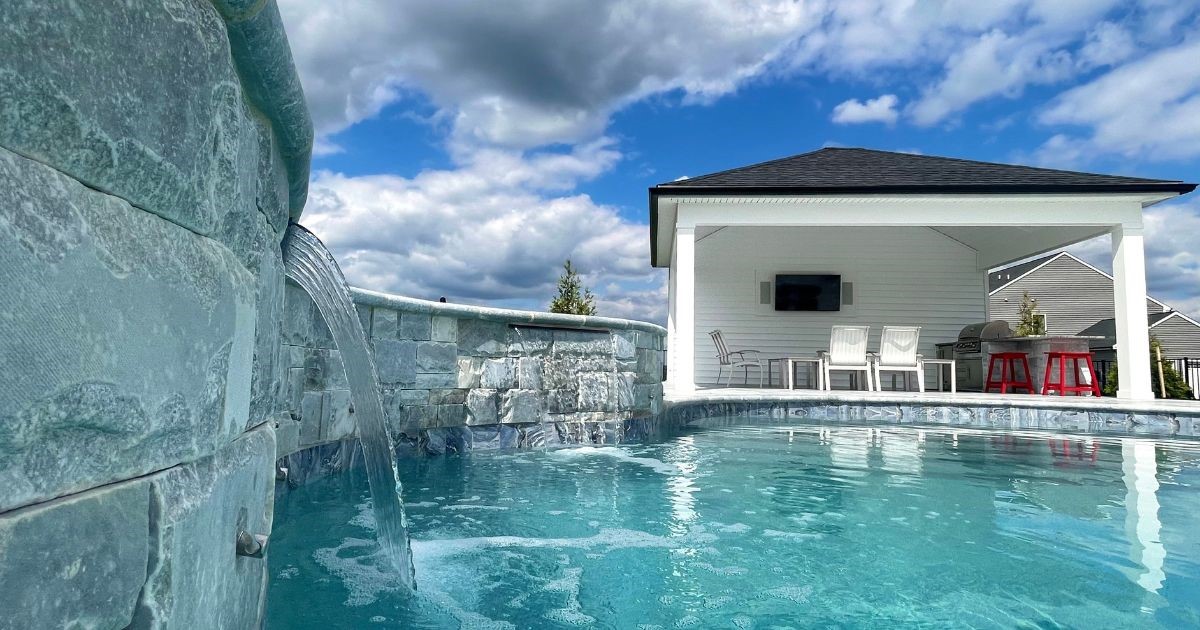The leaves are turning, the temperature is dropping—it's time to prepare your aquatic oasis for…

Inground Pool Covers – Which Type Should I Get?
To protect your inground pool and loved ones, you need an inground pool cover. But there are so many options and factors to consider when it comes to inground pool covers – which one should you get?
Well, that depends on your budget, and your wish for safety. Let’s take a look.
Types of Inground Pool Covers
There are several types of inground swimming pool covers, each with different features. These include your basic tarp, inground pool safety covers, and automatic pool covers. Whether you’re getting a pool cover at the same time you’re getting your pool installed, or you’re replacing an old pool cover, it pays to do your research.
Basic Tarp Inground Pool Covers
Tarp inground pool covers are by far your cheapest option, but they only last 1-3 years. Water bags placed around the edges hold down the tarp-like material.
While they do a decent job of keeping debris and sunlight out of your pool, they will collapse under even a small amount of weight. So, if your pet or a small child tries to walk on it, at the very least, they will get wet. Worst case scenario if no one sees them fall in or get trapped under the cover, they could drown.
In addition, you will need a pool cover pump for this basic cover to prevent a buildup of water, which can cause the cover to cave in.
Safety Covers or Security Covers
Inground pool safety covers, or security covers, are the type of pool covers we recommend for all of our clients. They are more expensive, but as the name implies, the provide safety and security.
These inground pool covers resemble a trampoline. Spring-loaded straps attach to anchors in the concrete pool surround. These straps hold it tightly in place, allowing the covers to withstand a large amount of weight. An adult can stand on it without fear of falling in, and these pool covers can hold heavy snow without a problem.
Mesh vs. Solid Pool Safety Covers
We recommend and install pool safety covers from Anchor Industries. They are well-known and respected in the industry for providing both mesh and solid inground pool covers.
- Mesh covers keep debris out but let water flow through – so your pool water may be pretty murky come springtime. But you won’t need a pool cover pump.
- Solid covers do not allow any light or water to pass through, so your inground pool will be fairly clean come springtime. However, solid covers will need a pool pump to ensure there is not too much water buildup.
Automatic Covers
So far, the inground pool covers we’ve talked about require manual labor to install the pool cover each fall, and to remove it each spring, and then put it into storage. Heavy-duty, vinyl automatic pool covers simplify the process, and you don’t have to worry about off-season storage.
Automatic pool covers use pulleys and reels installed at each end of your inground pool. You use this system to cover the pool, and to retract the pool cover. The cables attached to the automatic pool cover run through tracks on the edge of the pool. And it’s all automatic. You push a button, and the reels start turning. No hand cranking needed.
This makes it easy to close the pool cover before a storm, while you’re away on vacation, or for any other reason you might want to cover your pool. No dragging the cover out of storage each fall, and an easy pool opening in the spring.
You will need a pool cover pump in the winter, but the major downfall of automatic pool covers is the price. They can cost $10-20K.
Installation
With initial pool cover installation, you will need professional installation to protect the warranty. Once the anchors are installed, if you’re the handy sort, some inground pool covers are relatively easy to put in place and remove yourself. You can also hire a pool care company to take care of it as part of pool opening and closing services.



